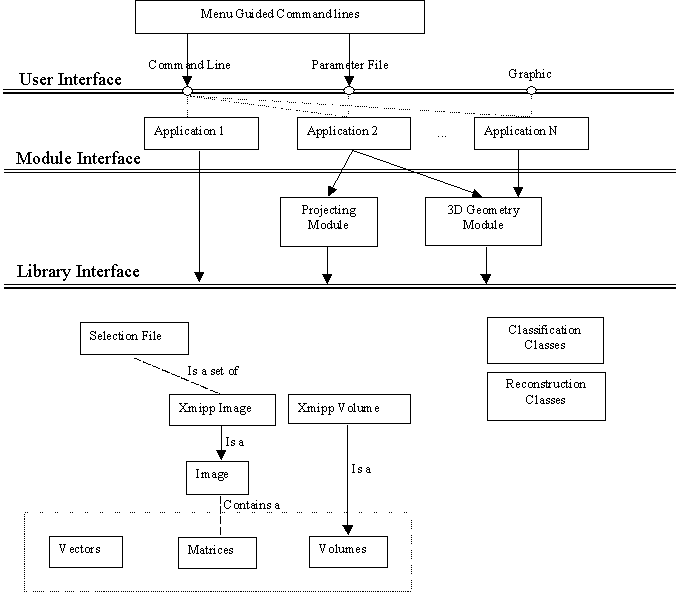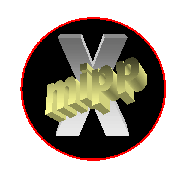
The software model is the structure that the package (programs and libraries) has got. It is divided in interfaces: one for the end users, another one for the application programmers and a last one for the library programmers. The end users can choose between 3 ways of accessing the package; not for all programs all ways are defined, but at least there will always be a command line input or a parameter file, and this two input methods can be managed from a Menu which simplifies the fact of writing complex command lines. This model prevents the lost of running large batches at the same time as it provides a simple way of running a more interactive session.
Regarding the programmer, he sees a two level interface: one given by the core library with the basic methods and procedures defined for the classes defined there, and a second one provided by the Module level which implements specific methods related to a less general class of algorithms (as could be 3D reconstruction). The final idea is to have a well tested core library and module set with a wide enough range of functions, in which one could rely once he is developing. This way, the developing time would be decreased as well as the probability of bugs, providing the library and modules are bug-free.

